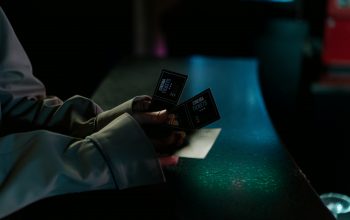If you’re heading into a screening of Spencer with the expectation of seeing two hours of dramatic royal rifts and in-depth depictions of Princess Diana and Prince Charles’ tumultuous relationship, you’ll be in for a surprise.
In cinema’s latest biopic, renowned Twilight actress Kristen Stewart stars as Princess Diana in Spencer, directed by Pablo Larraín. Stewart is joined by actors Timothy Spall, Jack Fathering and Sean Harris. Spencer takes place over Christmas 1991, mere months before the people’s princess officially separates from the Prince of Wales in 1992.
Princesses at Christmas sounds very Disney, but this film’s depiction of a broken woman at the end of her tether couldn’t be any less cutesy, with Sandringham a far cry from being the happiest place on earth. Over the course of 111 minutes we watch as Diana unravels, amidst episodes of bulimia and self-harm, struggling to exist in the monarchy’s tradition of rigidity and isolation.
Spencer is a film that feels less like a fly-on-the-wall insight into the life of a future queen and more like a bleak close-up of a young, troubled woman battling a painful mental illness. We see Diana, not as the spectacle or as the icon, but as a vulnerable woman in despair.
The royal family is almost banished by anonymity in this exploration into the Princess of Wales’ illness, reflective of her disconnect with her marital family and the loneliness with which this comes. Close-ups of the inner circle of the monarchy are few and far between. This Diana is alone, trapped in a loveless marriage and a cage of her own personal self-loathing. Stewart’s raw portrayal of the princess’ tragic struggle with an eating disorder and harrowing episodes of self-harm is devastating and sometimes uncomfortable to watch, something viewers should bear in mind before watching.
The style of Spencer is unexpected, experimenting with tropes usually found in thriller or horror movies. Music plays a subtle role in accompanying Diana’s mood. The score, which was written by Radiohead’s Jonny Greenwood, sets the tone of the film throughout and offers an insight for viewers of Diana’s mental state.
Jumbled-up jazz mimics the Princess’ moments of mania, whilst eery violins follow her as she paces down remote palace corridors and stalks her way through the desolate grounds of Sandringham, engulfed by billowing mists as she goes. These stylistic choices are mirrored with themes of isolation, contrasted with images of Diana being closely monitored like a caged zoo animal.
Close-up shots of Stewart feel intrusive as you observe a mental health crisis unfold with no-where to hide. The undertone of invasiveness continues throughout the film, with paparazzi, staff and members of the royal family keeping Diana under a lens.
Tones reminiscent of thrillers turn almost gothic with repeated Tudor imagery as Diana is haunted by the ghost of Anne Boleyn, a sombre touch of allegory that seems to warn the princess of her fate as the wife of a monarch who has fallen out of love. Except instead of death by beheading, a part of Diana has died through the neglect and betrayal of her husband. Boleyn was considered a witch by many, in Spencer, Diana is known as the woman who has lost her sanity. Both women are betrayed and whispered about by those around them.
Perhaps these nods to the past acknowledge the royal family’s dismay and lack of understanding for Diana as being archaic. In her darkest moments, viewers fear that she too will be destroyed by the institution she has married into.
However, despite the devastating pain in Stewart’s role as Diana, the audience is reminded of the woman the world fell in love with in moments shared with her sons. Stewart’s masterful warmth is evident in Diana’s scenes with Princes William and Harry, played by actors Jack Nielen and Freddie Spry.
The interactions between these characters are convincing and warm, allowing viewers to breathe sighs of relief between moments of sympathy for the princess in distress. Diana’s sons are two of very few characters in the royal family that are acknowledged by Larraín’s directorial techniques, Diana’s peripheral vision is focused on her children and the Sandringham staff and confidants and the audience sees through her eyes, empathising in her experience.
Whilst Stewart’s acting and Larraín’s visual choices stand out in this film, Spencer still manages to captivate audiences with nice enough dialogue and a limited timeframe of historical events. The main takeaway feature of this film is of style and an exploration into the wellbeing of one of the world’s most famous figures. If you’re hungry for deep-dives into royal dynamics, you’re better off sticking to The Crown. But, if you appreciate artistry, brilliantly convincing acting and the tackling of difficult themes, Spencer is the film for you.
Spencer is currently available to watch at Kingston’s Odeon.





